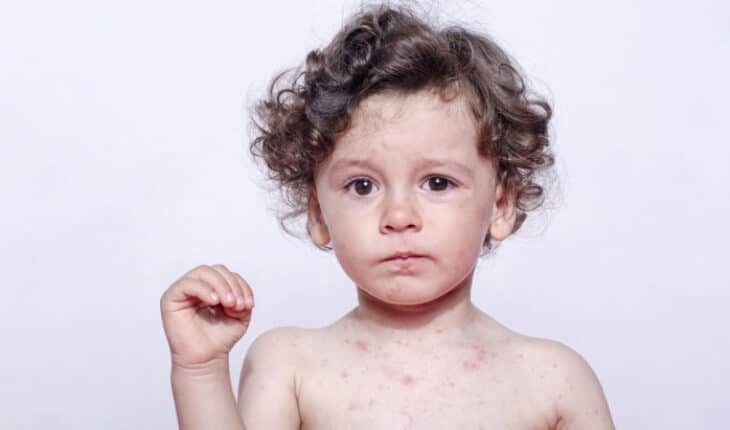Childhood diseases: How to identify them: Following the recent rise in Strep A and Scarlet Fever cases, this article will help you quickly identify common childhood diseases. How to recognise and treat mumps, measles, scarlet fever and hand foot and mouth. People of any age can catch mumps, it is an unpleasant disease, but can lead to serious complications, including viral meningitis, pancreatitis and swelling of the testes or ovaries in adults.
There has been a marked drop in uptake of the MMR (measles, mumps and rubella) vaccine which has led to a rise in measles cases. The MMR jab provides 99% protection against measles and so is vital to control this potentially serious disease. But Public Health England and PHW say the vaccine is slightly less effective against mumps, only providing about 85% immunity. Immunity against mumps also tends to reduce as people get older, which may be why more young people are now being infected.
It is therefore possible to catch mumps even if you have been vaccinated with MMR. However, the vaccination does reduce the severity of the illness and is likely to protect you from some of the more serious complications.
Mumps is a droplet infection, spread by coughs and sneezes and directly through contact with saliva from an infectious person such as through sharing drinks or kissing.
People who think they may have contracted mumps should keep away from university and social gatherings for a full five days as soon as they start to experience symptoms. In addition, it is extremely important that they wash their hands frequently, especially after blowing their nose and don’t share items such as water bottles or cigarettes with others.
Symptoms:Mumps is most recognisable by the painful swellings at the side of the face under the ears.
Other symptoms before the swelling may include:
- joint pain
- headaches
- nausea
- loss of appetite
- high temperature
- painful swelling of the testicles or ovaries
Anyone displaying these symptoms of mumps is advised to contact their GP for advice.
Treatment:It is important that you work on relieving symptoms until your body’s immune system fights off the infection. There are currently no medications to treat the virus.
The infection usually passes within a week or two.
During that time, you should:
- take over-the counter painkillers, such as ibuprofen
- eat soft foods such as soup which don’t require much chewing
- drink fluids, particularly water, but avoid acidic drinks such as fruit juice
- get plenty of bed rest
- apply to warm or cool compress to your swollen glands
If your symptoms don’t improve after 7 days, or suddenly worsen, visit your GP.
Measles and Scarlet Fever are also making a comeback.
Cases of measles and scarlet fever have increased considerably this year and parents are being warned to look out for the symptoms early. Parents and childcarers are also advised to know the signs of ‘slapped cheek’ too, as the rash can often be very similar to that of scarlet fever.
Measles cases are rocketing across Europe and there has been a considerable rise in cases in the UK too. It had been hoped that the number of cases would fall, as a result of the effective vaccine, but that doesn’t appear to have been the case and a lack of take up of the vaccine is now having a profound effect. Cases of scarlet fever are also on the rise and are now higher than they were in the 1960s. So – what are the signs to look out for and what can be done to help?
MeaslesMeasles is a highly infectious viral illness that can be extremely unpleasant and sometimes leads to serious complications. It can affect any age group but is most common in young children.
The infection usually lasts from 7 to 10 days; however, it can lead to serious and potentially life changing and life-threatening complications. In some people if it affects their lungs or brain. The virus is also particularly serious if someone is pregnant.
Symptoms:The initial symptoms of measles develop around 10 days after infection and can include the following:
- cold-like symptoms; such as a runny nose, sneezing, and a cough
- sore, red eyes that are often sensitive to light
- a raised temperature (fever), which could get up to 40C (104F)
- small greyish-white raised spots on the inside of the cheeks – these are classic symptoms of Measles.
A few days after this, a reddish-brown blotchy rash will appear, this usually starts on the head or upper neck and then spreads to the rest of the body.
When to see your GP:Phone your GP as soon as possible if you suspect that you or your child may have measles. Tell them this is what you think it might be, as this is a highly contagious illness and they will need to make arrangement to reduce the risk of spreading the infection.
Please also see your GP if you have had close contact with someone with measles and you are not fully vaccinated or haven’t had the infection before – even if you don’t have any symptoms.
How measles is spread:Measles is a highly contagious droplet virus which means it is spread through coughs and sneezes. The virus is able to survive on hard surfaces for quite a few hours. Therefore, if someone touches a contaminated surface and then puts their hands near their mouth or nose, they may become infected.
People with measles are infectious from when the symptoms develop until about four days after the rash first appears.
How measles can be prevented:Measles can be prevented by having the measles, mumps and rubella (MMR) vaccine. The more people who are vaccinated the greater the chance of eradicating this disease.
The MMR vaccination is given in two doses as part of the NHS childhood vaccination programme. The first dose is given when your child is around 13 months old and a second dose is given before your child starts school.
There was previously controversy about the safety of the MMR vaccine and a possible link with Autism. These concerns have since been disproved and the MMR vaccine remains a safe and extremely well tested weapon in the fight against this extremely unpleasant illness.
Adults and older children can be vaccinated at any age, if they haven’t been fully vaccinated before. Ask your GP about having the vaccination.
If for some reason the MMR vaccine isn’t suitable for you, a treatment called human normal immunoglobulin (HNIG) can be used if you’re at immediate risk of catching measles.
Hand hygiene and extreme care when looking after someone who is infected with Measles is vital to reducing the spread.
Treating measles:There are several things you can do to help relieve symptoms and reduce the risk of spreading the infection, including:
- ensuring that everyone regularly washes their hands and uses hand sanitizer. Tissues should be disposed of hygienically (flushed down the loo) and they should always clean their hands after. They should always cover their noses and mouths when coughing and sneezing
- taking paracetamol or ibuprofen to reduce your fever and aching and make you feel better
- drinking plenty of water and keep hydrated.
- closing the curtains can help reduce light sensitivity and make it easier for their eyes
- carefully clean their eyes using damp cotton wool and dispose of this hygienically
- staying away from nursery, school or work for at least four days from when the rash first appears
If you or your child are getting worse or experience any complications, get medical advice quickly.
Scarlet Fever
Scarlet fever is a highly contagious infection. Whilst it mainly affects young children, it can affect adults too. The symptoms for children and adults are the same, but it is much rarer for adults for get scarlet fever. It usually lasts about a week. It is caused by a Streptococcal A infection. Strep A is responsible for many sore throats and skin infections.
Symptoms:
- scarlet fever can start with flu-like symptoms, including a high temperature and swollen glands
- a rash appear will then appear a few days later
- the rash usually starts on the chest and/or tummy. It is rough to the touch, pinky/red in colour and can look like sunburn
- the tongue can also develop a white coating
When to see your GP:If your child has the symptoms listed above, they should see their GP
If, a week after seeing the GP, they are still unwell, you should make another appointment. This is especially important if they have recently had chicken pox.
Should they be unwell again, even if it is weeks after having had scarlet fever, this can be a sign of a complication, such as pneumonia.
PLEASE NOTE – as Scarlet fever is very infectious, it is best to tell the receptionist when you call to make an appointment. They may suggest a telephone consultation with the doctor, to avoid the risk of spreading the infection to those in the surgery.
Treatment:Your GP will probably prescribe antibiotics and, although they will not actually cure the scarlet fever, they will help to prevent any complications developing. People who suffer from impetigo are more likely to develop complications, so should be extra vigilant.
In addition, you can help the child by
Giving them lots of cooling fluids to drink and soft foods that will be easy to swallow with a sore throat
Administering child paracetamol to make them feel better and lower their temperature
Giving them antihistamine and applying calamine lotion to help with the itching from the rash
How to stop spreading scarlet fever:Adhere to strict hand hygiene rules and always use soap and warm water to wash your hands after any contact with the patient. Also ensure that used tissues are thrown away immediately and that all surfaces that have been touched are wiped down immediately.
Slapped cheekSlapped cheek can often be mistaken for scarlet fever, but it starts with a rash on the cheek (which looks like the child has been slapped) and then sometimes spreads to the body a few days after that. The rash usually lasts for around two weeks, but can continue after that.
The child may also have a headache, a sore throat and a high temperature.
Treatment:You normally don’t need to see your GP for slapped cheek, but a pharmacist may be able to help with an antihistamine, if the rash is itchy. Children’s paracetamol can also help reduce their aches and pains and also reduce the child’s temperature and they should drink plenty of fluids.
If you are concerned though, please do contact your GP.
Hand, Foot and Mouth Disease (HFMD)HFMD is a common infectious disease which affects mainly children aged 5 and under. It is commonly caused by viruses from the Enterovirus group.
HFMD can spread from person-to-person through close personal contact via blister fluid and unwashed hands, in the air through coughing or sneezing, contact with surfaces contaminated with faeces.
Symptoms:
- painful sores in the mouth
- poor appetite
- sore throat
- lack of energy
- fever
- skin rash with red spots
- sometimes blisters on the palms of the hands and soles of the feet, buttocks and genital area
Treatment:
- drink fluids to remain well-hydrated
- eat soft foods like soup – avoid hot and spicy foods and acidic foods as these are likely to be painful to eat due to the mouth ulcers
- take regular paracetamol or ibuprofen to reduce the pain from a sore mouth or throat
Click here for more information about how long to keep your sick child off school or nursery.







